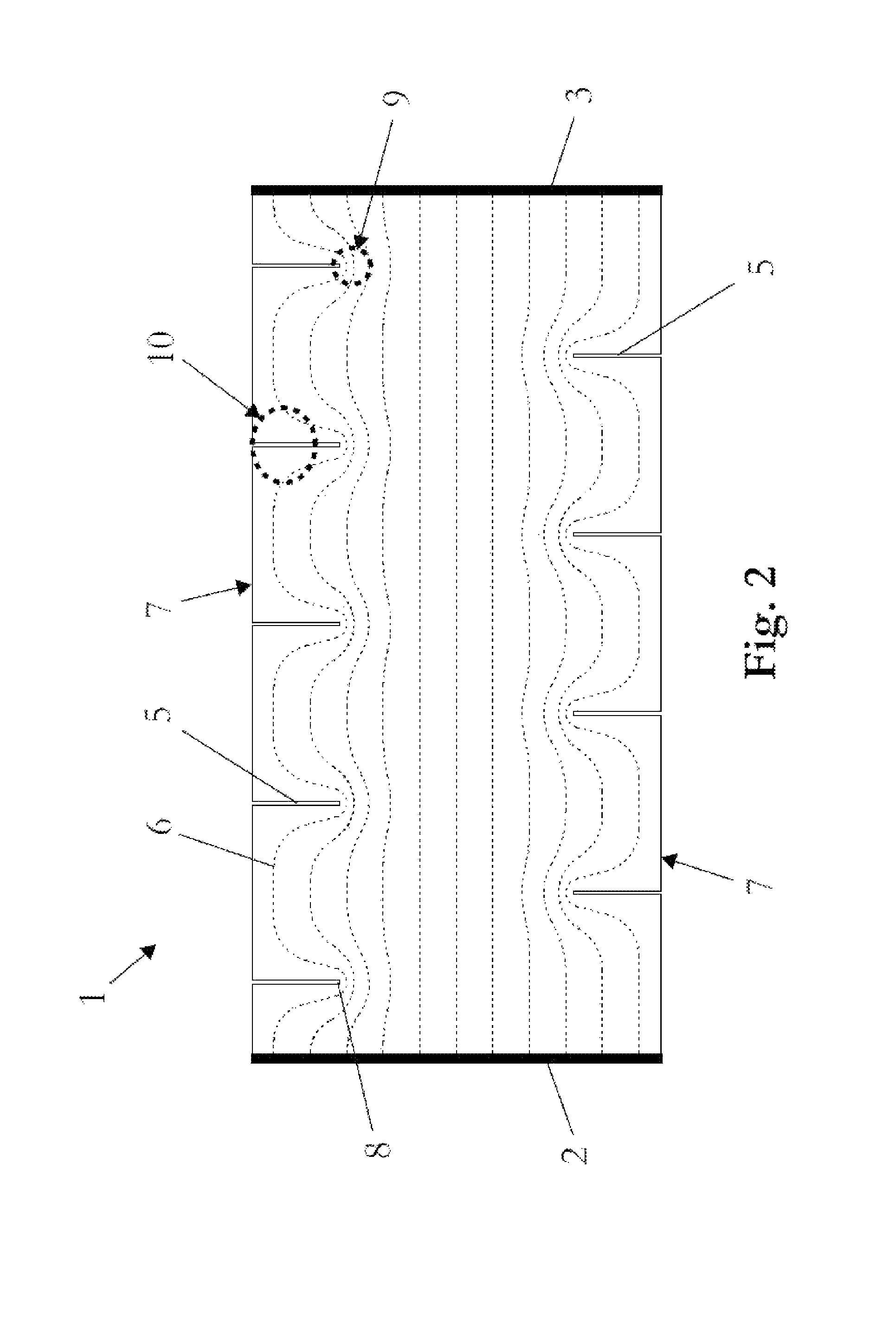Laminar evaporator
a technology of evaporator and flow, applied in the field of laminar flow evaporator, can solve the problems of unfavorable effect, large temperature gradient, and disadvantage of temperature distribution, and achieve the effect of avoiding additional calorific losses and high current density
- Summary
- Abstract
- Description
- Claims
- Application Information
AI Technical Summary
Benefits of technology
Problems solved by technology
Method used
Image
Examples
Embodiment Construction
[0034]Table 1 shows the material specifications of an exemplary laminar evaporator in accordance with the invention. According to this the laminar evaporator consists of six layers: a metal foil and five metal wire meshes sintered onto it. The metal in the present example consists of the heat-conducting alloy NiCr8020, DIN material number 2.4869. Different heat-conducting alloys could of course also be used. Heat-conducting alloys can be ordered as starting material from the company ThyssenKrupp VDM GmbH, www.thyssenkruppvdm.de, and then processed into foils, fine wires and wire meshes. ThyssenKrupp VDM GmbH supplies the previously mentioned material NiCr8020, DIN material number 2.4869, under the trade name “Cronix 80”, which can also be fused to a very pure specification with a carbon content <0.02%. The company Record Metall-Folien GmbH, www.recordmetall.de, in co-operation with its suppliers, is in a position to make available metal foils from a thickness of 5 μm from starting m...
PUM
 Login to View More
Login to View More Abstract
Description
Claims
Application Information
 Login to View More
Login to View More - R&D
- Intellectual Property
- Life Sciences
- Materials
- Tech Scout
- Unparalleled Data Quality
- Higher Quality Content
- 60% Fewer Hallucinations
Browse by: Latest US Patents, China's latest patents, Technical Efficacy Thesaurus, Application Domain, Technology Topic, Popular Technical Reports.
© 2025 PatSnap. All rights reserved.Legal|Privacy policy|Modern Slavery Act Transparency Statement|Sitemap|About US| Contact US: help@patsnap.com



